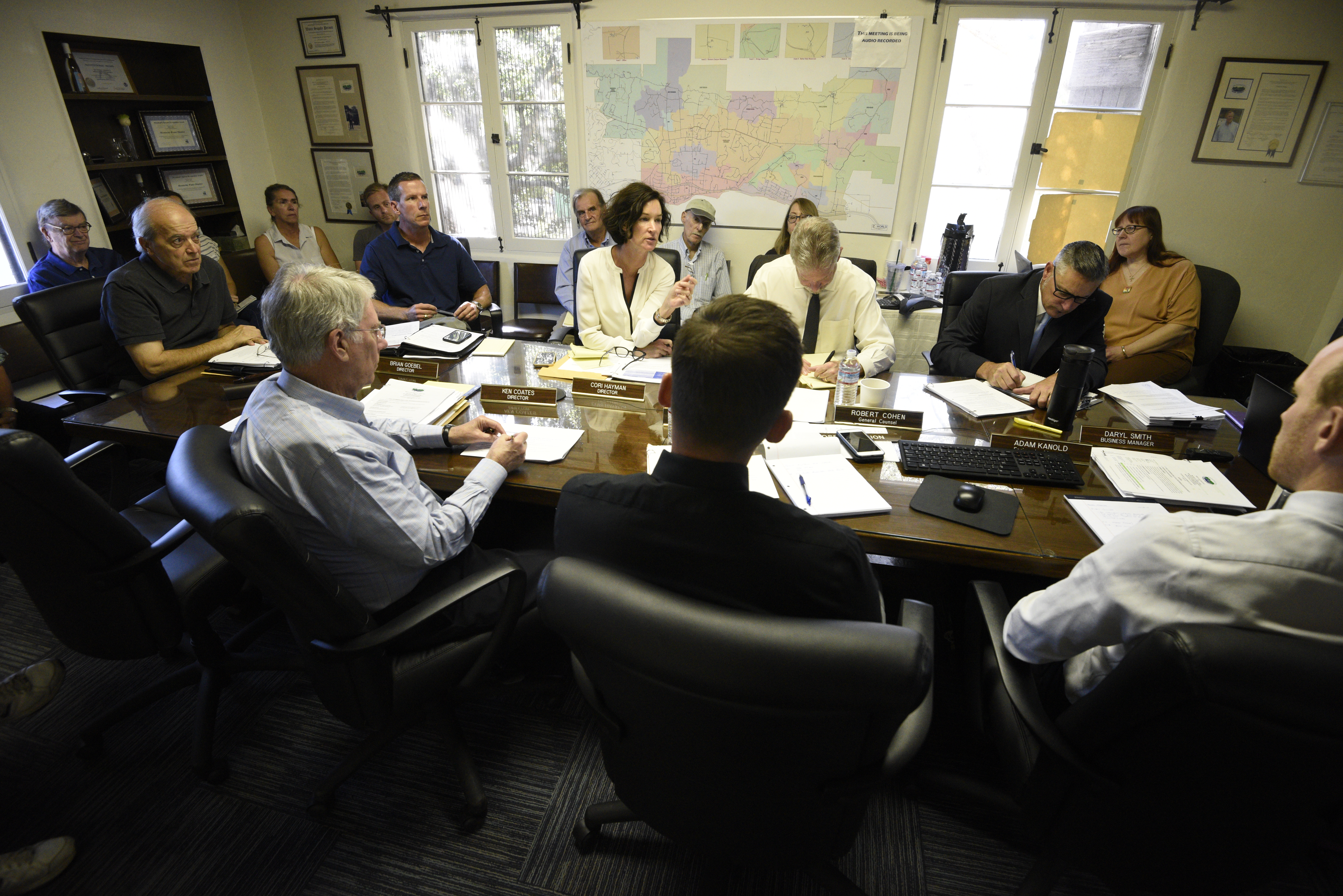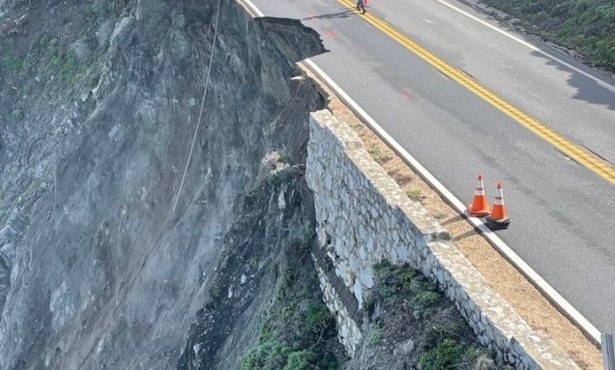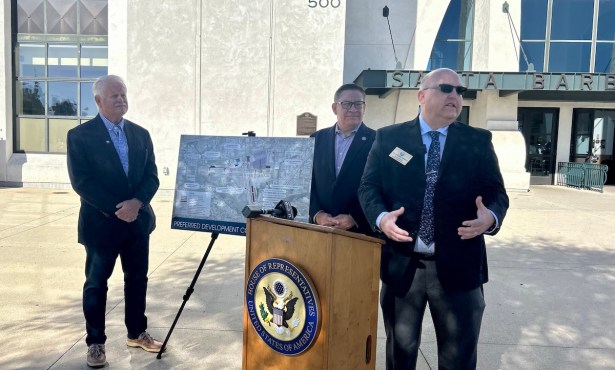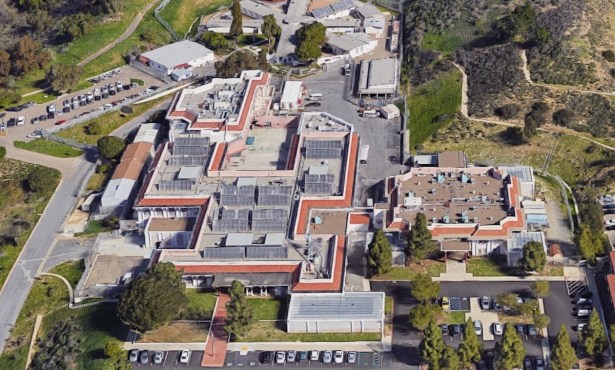Montecito Thirsting for New Water Source
Water Board Weighs Rate Hikes to Buy $4 Million Annual Supply from Santa Barbara

The seven-year drought is over, rationing has ended, and there’s enough water on hand for the next three years, but Montecito, a small but wealthy community of one-acre lots, large estates, and luxury resorts, is thirsting for new supplies.
After years of negotiations, the Montecito Water District is closing in on a deal to buy 1,430 acre-feet of water from the City of Santa Barbara, every year for the next 50 years. That’s enough water to meet a third of Montecito’s annual demand. The city would produce the extra supply at its $72 million desalination plant, at a yearly cost to Montecito of $4.3 million.
“Is this water expensive? It is on the high end,” said Nick Turner, the Montecito Water District general manager. “But if you consider that it’s 100 percent reliable and it’s in our backyard, there are some significant benefits to that.”
And, potentially, some big rate increases. Preliminary scenarios presented at a recent meeting of the district finance committee suggest that the average monthly water bill in Montecito could go up by as much as 50 percent, from $239 now to $375 in five years. Fixed rates — currently $45 per month for a ¾-inch water meter — could go as high as $213, the scenarios show.
The rate hikes would cover a $6.4 million projected increase in the district’s yearly expenditures, from $19.4 million today to $25.8 million in 2024 — chiefly for city water, but also for pipeline replacement and the design of a recycled water plant.
“The community has advocated for water supply reliability, given what they went through in the drought,” Turner said. “We’re pursuing ‘desal’ to fill that void.”
But the plan has drawn fire from two prominent critics — Bob Roebuck, a past Montecito Water District general manager, and Dick Shaikewitz, a veteran water board director who lost his seat in last year’s elections. They argue that Montecito doesn’t need Santa Barbara’s water.
“We got through the last drought with supplies from the State Water Project,” Roebuck said. “Do we want to get this extremely expensive desalinated water with a 50-year commitment, where we have to use it even when it’s raining cats and dogs, and the dams are spilling? The whole thing just bothers me.”
In 1991, during a six-year drought, Montecitans voted overwhelmingly to import a $4 million annual supply from the State Water Project — as much state water as Santa Barbarans ordered for their entire city. The bill, which covers the construction costs of an aqueduct branch to Lake Cachuma, is due every year through about 2040.
During the drought of 2011 to 2018, normal state aqueduct deliveries were slashed, but the Montecito Water District was able to import $12 million in supplemental state supplies. To pay for them, the district imposed a “water shortage emergency surcharge” of $3.45 for every hundred cubic feet of water, or 750 gallons. For the smallest users, it was a 64 percent rate increase.
Far from raising water rates again, Roebuck and Shaikewitz want the district to discontinue the emergency surcharge, starting now. Without it, Roebuck said, Montecito’s average monthly water bill would be $163 per month. Under the rate scenarios presented this month to the district, that bill would more than double in five years, he said.
“They’ve declared that the drought is over, but the surcharge lives on,” Roebuck said.

The surcharge, plus heavy penalties for over-watering, helped cut the community’s extravagant water use by half from 2013 to 2017, but they triggered a voter backlash. An all-new water board, backed by nearly $200,000 in donations over two campaigns, was elected on pledges to bring “water security” to Montecito.
District reports show that Montecito currently has enough water from Lake Cachuma, Jameson Lake, district wells, and the state aqueduct to supply its customers for the next three years. But with a yearly supply from Santa Barbara on hand, Turner said, residents would not be subject to water rationing or penalties for over-watering during the next drought.
“The board does not want to end up back in the situation that it did in 2013,” he said.
In late November, Turner said, the water board will hold a public workshop to discuss the rate increase proposals, which are likely to change substantially between now and then. In years of average rainfall, he said, the district should be able to offset about $1 million of the annual cost of the city supply by not ordering any state water, avoiding the expense of delivery, and treatment.
As for the emergency surcharge, “It’s not going away,” Turner said. It will be rolled into future rates, he said, because the district is still contending with the impacts of drought — historically low groundwater basins, higher water treatment costs because of the Thomas Fire, and a lingering debt for supplemental state water.
“We need the revenue that the surcharge brings in,” Turner said.
Notwithstanding their efforts to conserve during the drought, Montecitans remain some of the highest water users in California, at 200 gallons per capita per day. Eighty-five percent of their water goes on landscaping. By contrast, Santa Barbarans use an average 75 gallons per capita per day, 50 percent of it on landscaping.




You must be logged in to post a comment.